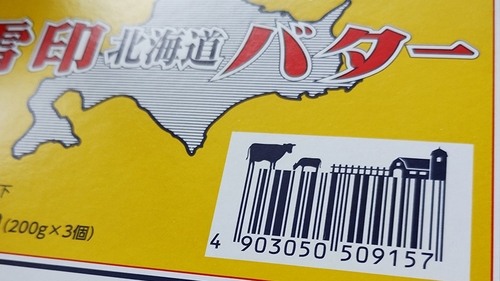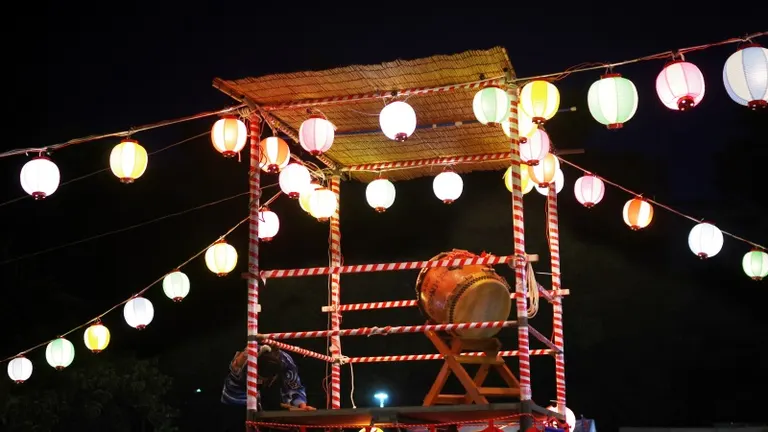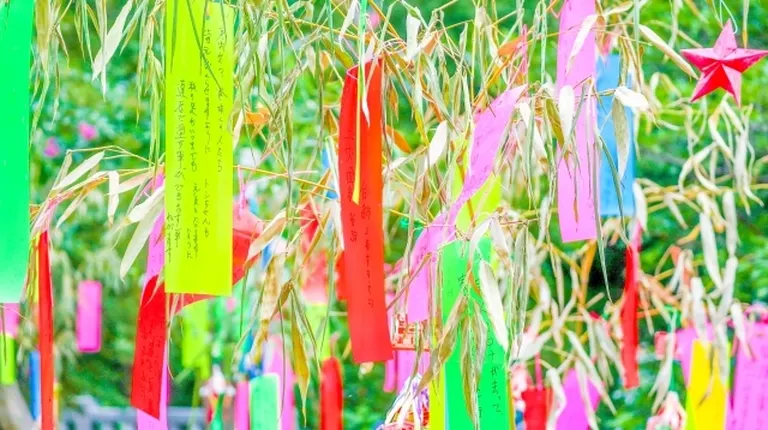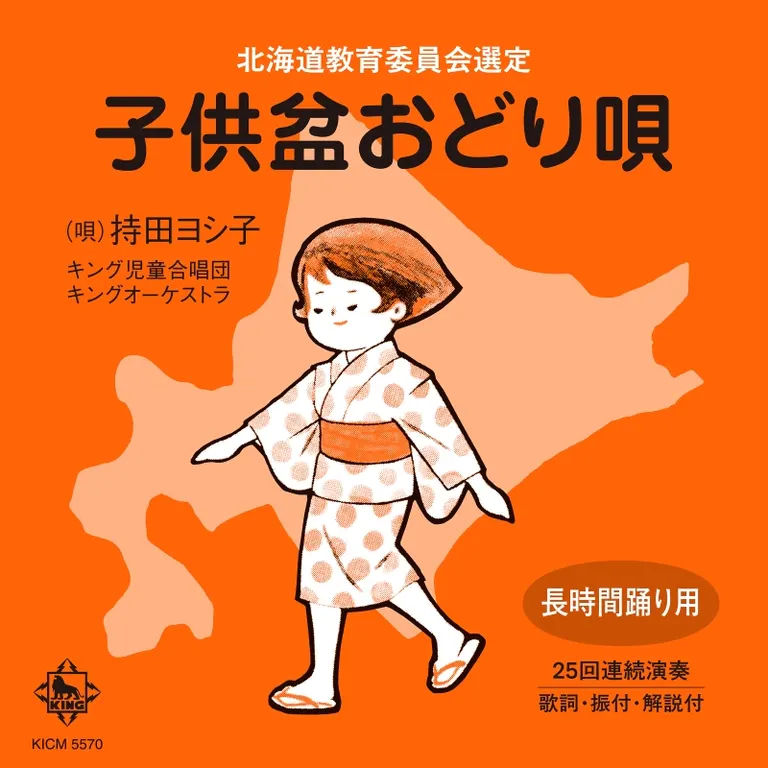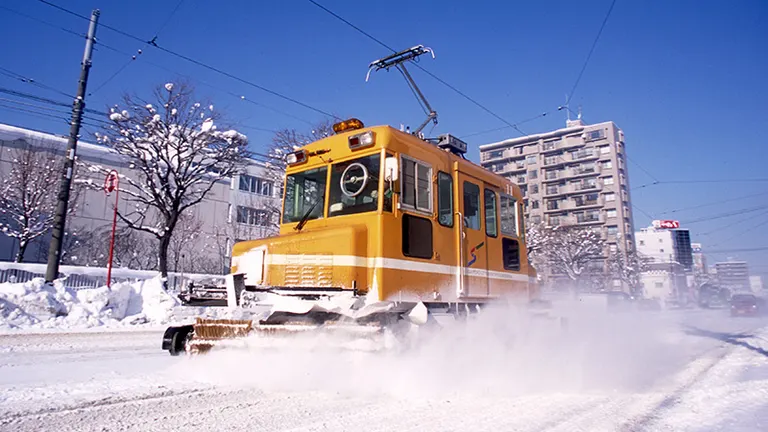
ARTICLES
When it snows, it's out in force! What is Sapporo's "Sasara Train"? A detailed explanation of when it operates and where you can see it
The "Sassara Tram" is a famous sight that can be seen in Sapporo in winter. It is a tram specially designed for snow removal, using bamboo brushes called "sassaras" to clear away snow. This traditional snow removal method has been used since the Taisho era, and continues to protect the transportation of Sapporo residents. In this article, we will introduce in detail how the sassara tram works, as well as when and where you can see it.
- The "Snowplow Train" is a snow removal vehicle equipped with a bundle of bamboo brushes.
- Snow removal methods unchanged since the Taisho era
- When and where can you see the "Sasara Train"?
- Where does the "Sasara Train" operate?
- Thanks to the Sasara Tram, the city trams rarely stop running even during heavy snowfall!
The "Snowplow Train" is a snow removal vehicle equipped with a bundle of bamboo brushes.
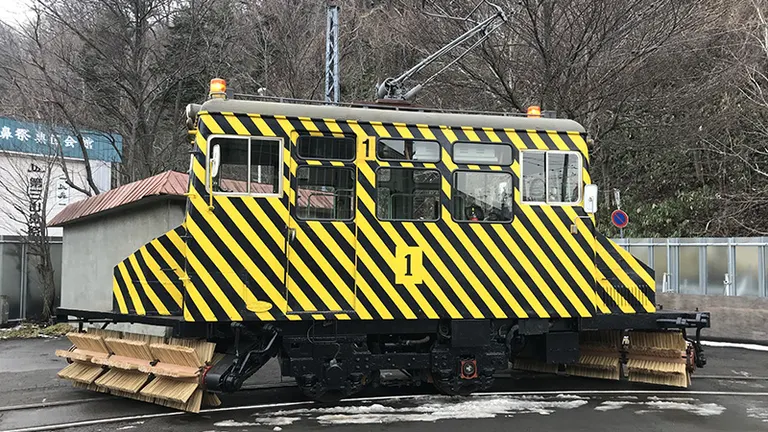
The bundles of bamboo brushes are attached to the front and rear bottom of the train.
The snowplow train is a train used to clear snow from the tracks on which streetcars run. Passengers are not allowed to ride on this train, which is operated exclusively for snow removal by two people: a driver and a staff member who operates the snowplow.
By the way, what do you think "Sasara" is? Sasara is a bamboo brush. It's the same kind of kitchen implement you use to remove stubborn dirt from pots and pans. Bamboo is elastic, so it can easily brush away snow and ice from the tracks without damaging the rails.
Snow removal methods unchanged since the Taisho era
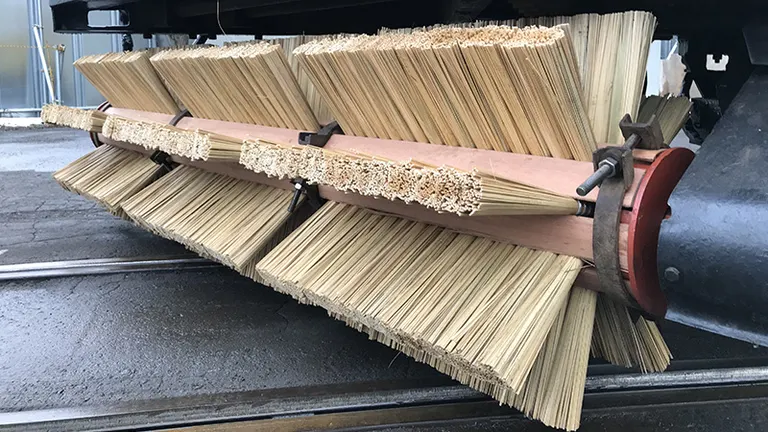
The bottom of the Sasara train. The Sasara is made from madake bamboo from the Tohoku region.
This may seem like a somewhat analog method of snow removal, but in fact, this method has remained almost unchanged for over 100 years. The Sasara tram first appeared in the late Taisho period. It was apparently inspired by the bamboo kitchen scrubbing brush. Since then, they have tried other snow removal methods, but ultimately decided that the Sasara was the best, and its basic structure remains roughly the same as when it was first introduced in the Taisho period.
The bamboo slats used in the bamboo train are nailed one by one to a wooden frame, then fixed into rollers and attached to the bottom of the front and rear of the train. There are a total of 800 bamboo slats per car.
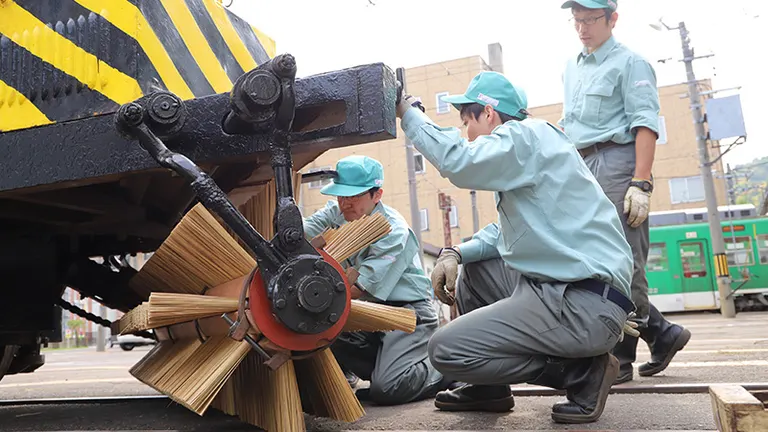
Apparently, the installation of the bamboo slats is all done by hand.
Driving multiple times puts a lot of strain on the slats, so they are usually replaced two to three times per season. In recent years, the amount of snow has been increasing, rather than powdery snow, which puts more strain on the slats and causes them to deteriorate faster, leading to more frequent replacements.
When and where can you see the "Sasara Train"?
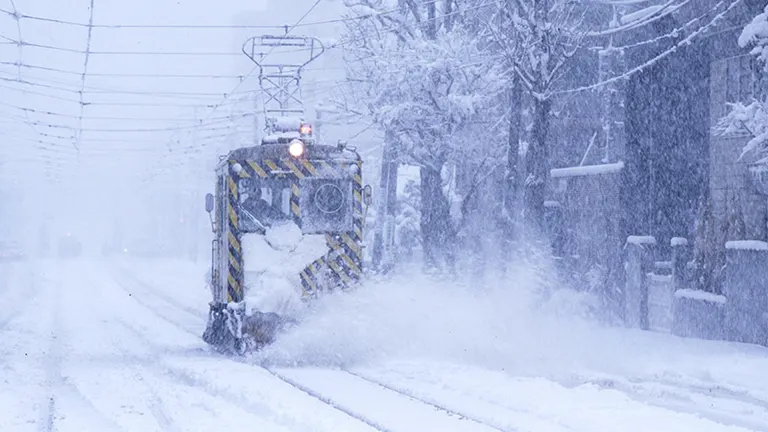
While moving, the rotor of the brush rotates in the opposite direction to kick up the snow on the track and remove it.
The sight of them running, kicking up snow, is truly spectacular! You can feel the strength, power, and reassurance of these snowshoes protecting the feet of the people of Sapporo, a city that experiences heavy snowfall. However, even if you want to see it, it's not that easy to do so as there are no set operating times. However, here are some tips to increase your chances of seeing it.
Sasara train operating hours
The Sasara train operates in two patterns:
1: Around 4am every morning during the snow season (generally from late November to late March) *Trains will operate almost daily during this period, and will also be cleared of snow and inspected for accumulated snow. 2: When it starts to snow during train operating hours & when it continues to snow *Irregular service
Before dawn in winter, just after 4:00 AM, if you are near the streetcar line, you can see the bamboo slats running. However, if there is no snow on the tracks, the bamboo slats will not rotate and run, so they will simply pass by as part of an inspection.
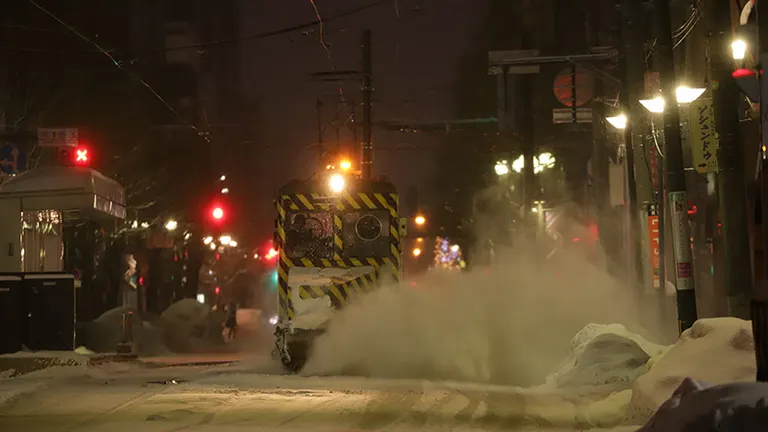
Before the first train departs, the snow that has accumulated on the tracks is cleared away.
If you want to see the tram kicking up snow as it runs, the best time to go is after the snow has started to fall steadily. You can still see the impressive sight from the sidewalks along the roads it runs on. (It's dangerous to go near the tracks, so don't go near them!) However, there are no set operating times, so you'll have to wait in the falling snow for the tram, not knowing when it will arrive...
Where does the Sasara train operate?

The elusive Sasara train appears out of nowhere, and it's all down to luck as to when and where you'll encounter it.
By the way, because road heating prevents snow from accumulating between Susukino, Tanukikoji, and Nishi 4-chome in central Sapporo, the Sasara trains do not rotate even when they pass through. Also, they sometimes turn back at Susukino or Nishi 4-chome, and do not run through the city center, such as Tanukikoji. In other words, even if you wait in this section of the city where many people visit, you will not be able to see the spectacular running scene, so please be aware of this.
The Sasara train usually starts with one vehicle, and depending on the snowfall, two, three, or even four vehicles may be dispatched. If you can catch this timing, you're in luck!
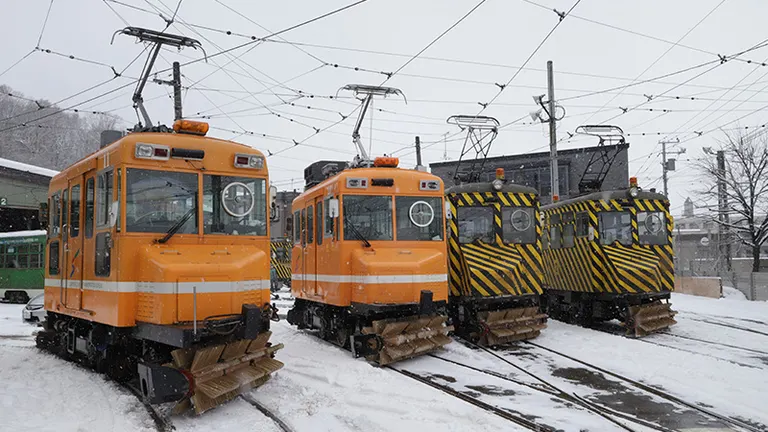
Thanks to the Sasara Tram, the city trams rarely stop running even during heavy snowfall!

When the Sasara train starts running, it feels like winter has arrived in Sapporo again this year.
The Sasara tram continues to run through the city of Sapporo, kicking up snow just as it did in the Taisho era. Despite being a city with heavy snowfall, it is thanks to the Sasara tram that the tram runs almost without interruption. We would like to express our gratitude to everyone who continues Sapporo's snow removal tradition and protects the citizens' transportation in the winter!
Photo courtesy of Sapporo Transportation Business Promotion Corporation
Writer Profile
 Travel Creator
Nobuka Kawashima
Travel Creator
Nobuka Kawashima
Originally from Kanagawa Prefecture, he traveled to all 179 cities and towns in Hokkaido, and was captivated by the charm and magic of the northern region, before moving to Hokkaido in 2009. Since then, he has been working on media coverage, filming, producing articles and videos, and planning and editing, mainly related to travel and regional revitalization. His mission is to "increase the number of Hokkaido fans."






